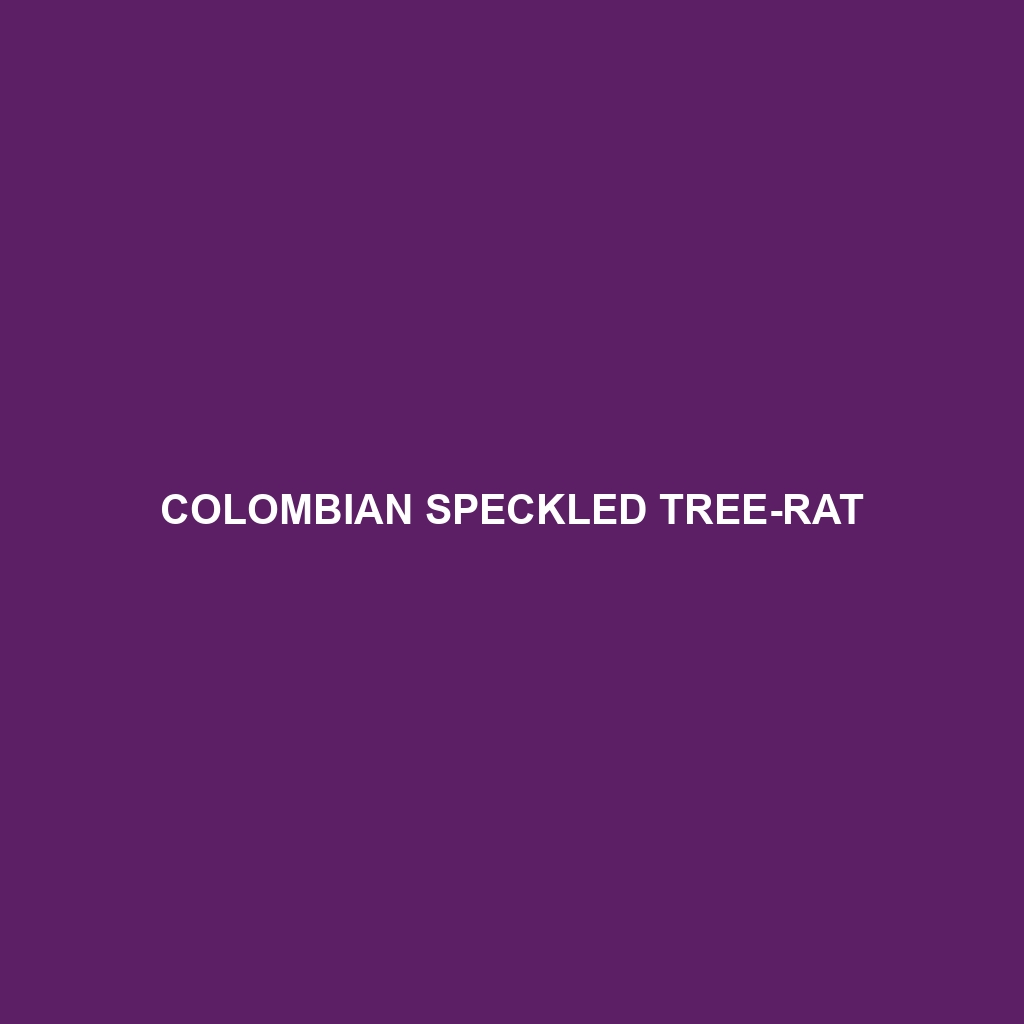Colombian Speckled Tree-rat
Common Name: Colombian Speckled Tree-rat
Scientific Name:
Habitat
The Colombian Speckled Tree-rat is primarily found in the lush, tropical rainforests of Colombia. These rodents typically inhabit areas with dense canopy cover and abundant vegetation, including the foothills of the Andes Mountains and the Amazon basin. They prefer humid environments, which provide the necessary resources for their survival and reproduction.
Physical Characteristics
This species is known for its moderate size, generally ranging from 20 to 30 centimeters in length, excluding its long, tufted tail. The coat of the Colombian Speckled Tree-rat exhibits a unique speckled pattern, featuring shades of brown, tan, and black, which provides effective camouflage among the forest foliage. Its large eyes and rounded ears enhance its sensory capabilities, making it well-adapted to its arboreal lifestyle.
Behavior
Colombian Speckled Tree-rats are primarily nocturnal, emerging at night to forage for food. They are skilled climbers, often seen navigating branches with agility. Their social structure can vary, and they are known to be territorial, establishing home ranges that may overlap with others. These tree-rats communicate through a variety of vocalizations and markings to assert dominance and locate mates.
Diet
The diet of the Colombian Speckled Tree-rat primarily consists of fruits, seeds, and leaves, making them herbivorous foragers. They often consume ripe fruits, which are abundant in their rainforest habitat, and are also known to eat flowers and bark during dry periods. This flexible feeding behavior allows them to adapt to seasonal changes and food availability.
Reproduction
Colombian Speckled Tree-rats breed throughout the year, with peaks during the rainy season when food is plentiful. A typical litter consists of two to four offspring, which are born blind and helpless. The mother nurses her young in a sheltered area within the trees, and they begin to emerge and explore their surroundings after about a month.
Conservation Status
The Colombian Speckled Tree-rat is currently categorized as vulnerable due to habitat loss from deforestation, agricultural expansion, and urban development. Conservation efforts are critical in preserving their natural habitats and ensuring their survival. Protecting the rainforest ecosystem is essential for the future of this unique species.
Interesting Facts
One fascinating aspect of the Colombian Speckled Tree-rat is its ability to communicate through distinct vocalizations, which vary according to context. Additionally, these mammals play a vital role in seed dispersal, helping to maintain the biodiversity of their ecosystem.
Role in Ecosystem
As a herbivorous species, the Colombian Speckled Tree-rat serves a crucial function in its ecosystem by aiding in seed dispersal. This promotes plant growth and helps maintain healthy forest dynamics. Moreover, they are an important food source for various predators, contributing to the ecological balance within their habitat.
This HTML-formatted species description ensures that key information about the Colombian Speckled Tree-rat is presented clearly and is optimized for search engines. The use of relevant keywords and structured headings improves readability and discoverability online.
